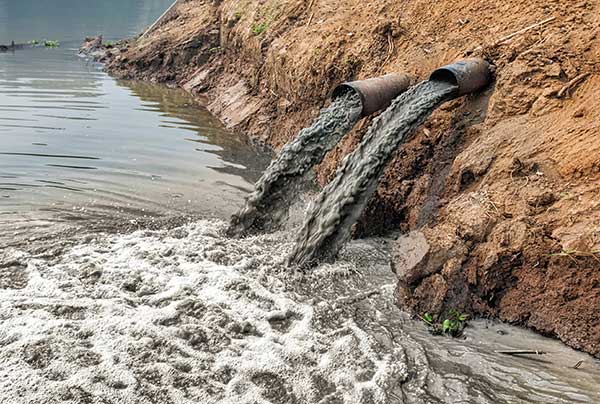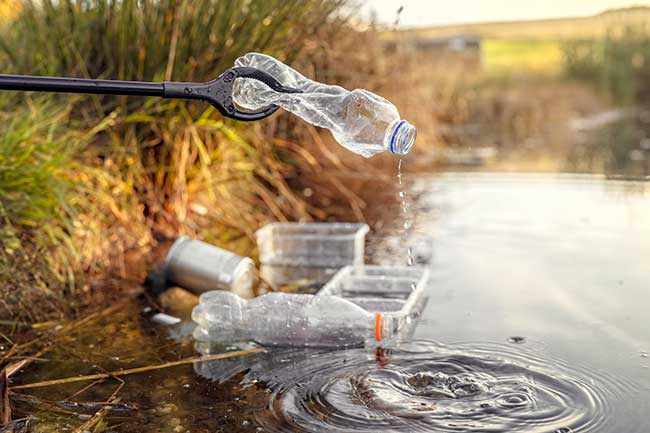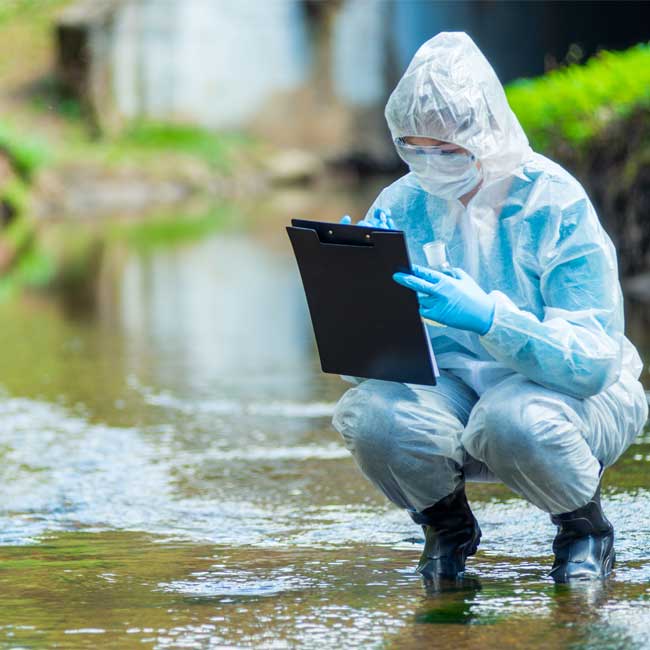Most of us bring to mind the plastic that is floating in the ocean when we hear water pollution. While the ocean is polluted with plastic there are other forms of water pollution that we need to reduce and prevent.
When our water becomes contaminated it is bad for animals, plants, and humans. It is a great concern for the future that we have plenty of clean drinking water.
Besides the ocean other bodies of water also get polluted every day. These waterways include:
How do these waterways become polluted? Several types of pollutants and most due to humans is what contaminate our waterways.


There are many types of water pollutants. The following are some of those pollutants:
But how do those things get into our water you may be asking?
There are several ways pollution ends up in our waterways. Let’s take a look at them.
Agricultural uses – Farmers and ranchers use pesticides and fertilizer. There is also the fuel and oil for the agricultural machines and trucks they need to run to harvest their crops.
Runoff from storms – If the storm is heavy it will cause heavy run off from hills and mountains. There is also storm water that is generally polluted from all the vehicles that use gasoline and oil, the tires, people littering, etc.
Domestic sewage – Wastewater treatment plants clean about 34 billion gallons of waste water each day. While treatment cleans some of the toxins and pollutants out, they do not remove all of them. A percentage is released back in to our water system.
Toxic Waste – toxic waste is any of the following:
Many of those cause cancer, damage to chromosomes, and birth defects. These usually come from manufacturing, agriculture, and run off from storms.
Sediment – sediment can compromise an ecosystem. It can interrupt mating cycles of fish and even kill bottom feeders. It is a result of soil erosion or construction activity.
Petroleum – oil can lay on roads or parking lots until a storm washes it into the nearby water bodies.
There are solutions to help reduce the amount of pollutions that end up in our waterways.
There are solutions that can be employed to help reduce water pollution. Industries and residents can all take part in the solutions.
Wastewater treatment – Need to do regular maintenance and visual inspections to ensure that there are no leaks. Sensors like pH sensors, Conductivity sensors, and Oxidation-reduction potential sensors should also be employed.
Reduce the use of Plastic –It is not just plastic bottles and bag there are other plastics that enter our waterways like the ocean. Plastics you don’t even know about or think of. Plastics or microplastics can be found in:
To reduce plastics we can do the following:

Water conservation – use water efficient toilets, don’t pre-rinse all your dishes before adding them to the dishwasher.
Storm water management – storm water runs into storm drains in cities. In rural area it runs along the road in ditches. Storm drains in cities go into wastewater treatment plants.
Reduce erosion near waterways – plant trees, bushes, grass, along waterways like rivers, to reduce erosion.
The more we clean up the water pollution and employ methods to reduce more pollutants from entering our waterways the cleaner our water will stay.